Introduction to Collecting Rolex Sports Watches
About
This site describes what you need to know to begin collecting Rolex sports watches. If you have a bit of money and would rather “see” it in your daily life (like an art collection on your walls) rather than read about it in a bank statement, find something you enjoy and start collecting.
Why Watches?
Watch collecting probably won’t earn you money as an investment, but with a little knowledge you won’t lose money (or deal with the stress of the vagaries of the stock market) and you can enjoy it. You can collect Seiko watches for under $200 or Patek Philippe devices, like the Grandmaster Chime (shown below) which was for sale for $9,000,000 on chrono24.com as of 09/23.
This site describes what you need to know to begin collecting Rolex sports watches. If you have a bit of money and would rather “see” it in your daily life (like an art collection on your walls) rather than read about it in a bank statement, find something you enjoy and start collecting.
Why Watches?
Watch collecting probably won’t earn you money as an investment, but with a little knowledge you won’t lose money (or deal with the stress of the vagaries of the stock market) and you can enjoy it. You can collect Seiko watches for under $200 or Patek Philippe devices, like the Grandmaster Chime (shown below) which was for sale for $9,000,000 on chrono24.com as of 09/23.
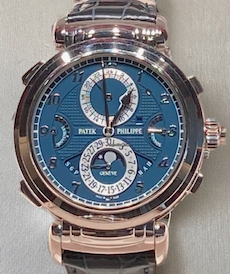
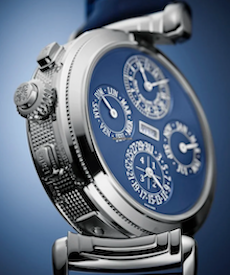
Yes, there are people who make a living buying and selling watches. And you could reach that level, developing the expertise needed some day. But, many of us with a day job are just interested in a hobby involving tangible items (i.e., not browsing the internet) they can study and learn about.
This writer (who appreciates mechanical contrivances, design and tradition) found himself drawn to watches where you can spend a pleasant day watching YouTube reviews or engage in the social aspects of an interest in horology – it’s not a lonely, self-absorbed thing.
The Social Aspects
Commenting on someone’s watch is a great conversation starter, as you immediately have something in common. There are actually guides to watch etiquette, like what to do when randomly encountering a fellow collector, or how to comment on a stranger’s timepiece. To get the conversation rolling, learn 26 slang terms for the wannabe expert. Join
This writer (who appreciates mechanical contrivances, design and tradition) found himself drawn to watches where you can spend a pleasant day watching YouTube reviews or engage in the social aspects of an interest in horology – it’s not a lonely, self-absorbed thing.
The Social Aspects
Commenting on someone’s watch is a great conversation starter, as you immediately have something in common. There are actually guides to watch etiquette, like what to do when randomly encountering a fellow collector, or how to comment on a stranger’s timepiece. To get the conversation rolling, learn 26 slang terms for the wannabe expert. Join
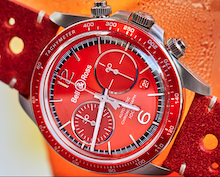
Browse for other interesting groups; here are 53 blogs for watch enthusiasts and collectors to choose from. When you are serious spend five hours taking a masterclass in watchmaking at The NakedWatchMaker, it’s $600 and you will not be disappointed. Photo from redbargroup.com
Why this Website?
Like you, this writer was plenty nervous and consumed with the question “How do you avoid buying a fake?” Most people believe the market is flooded with counterfeit watches and scammers. Instead, he’s learned safe ways to meet ethical people who routinely wire tens of thousands of dollars to strangers, who send by next-day delivery a genuine watch in a safe transaction. You’ll learn all about that here. While we focus on Rolexes, much of the information here will also apply to any brand or class of watch. My name is Jerry, and I’ll keep my last name and personal information private for obvious reasons, as this is a website for people interested in an expensive hobby; i.e., collecting Rolex watches. So let’s dive in!
What’s so Special About Rolex?
Rolex is unique. While it makes a fine watch, it is far from the most expensive, complicated or beautiful as there are dozens of other companies specializing in one or more of those features. What is unique about Rolex is their consistent quality, due to controlling every aspect of watchmaking from design, to manufacture, to distribution. Rolex makes all parts of its watches, using proprietary machinery which is human controlled. Watches are assembled in Rolex facilities in Switzerland, there is no outsourcing to low-wage countries.
Pretty much the only thing not done under their roof is when they send out every chronometer to the Swiss organization COSC for testing and certification. When they get the watch back Rolex then tests it in-house for accuracy for days before sending them out to their 367 authorized dealers who all sell them at exactly the same price. Rolex works stainless steel into all parts in their own plants, and they have their own foundry to make their gold.
Rolex has its own laboratories with micro-engineers, metallurgists and physicists developing components like their Parachrom Bleu Hairsprings and Everose gold alloy. At BobsWatches.com read about Parachrom Hairsprings, the blue spring shown below:
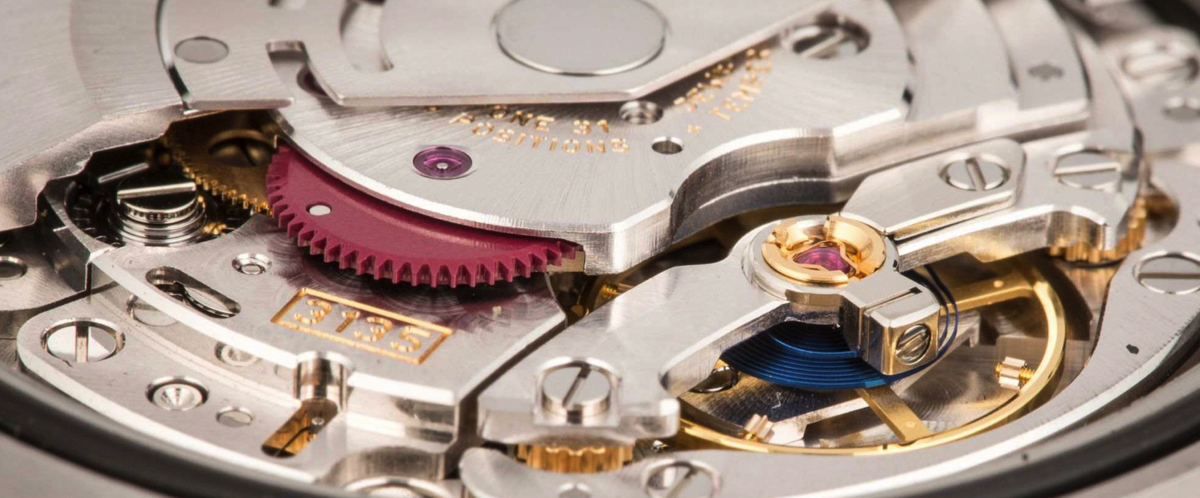
Photo from bobswatches.com
No other watchmaker manufactures their own precious metals. They employ many gemologists to test and set diamonds, all of which are X-ray tested as genuine and are all rated in the top four grades. According to aBlogToWatch.com Rolex claims to have discovered only two fakes out of 20 million diamonds tested. It takes about a year to make a watch at Rolex. The only thing they don’t “make” are the synthetic sapphire crystals and some dial hands.
And, Why Are They so Expensive?
Many think Rolex, like the De Beers Diamond Consortium, holds back inventory when prices fall, to reduce supply to simulate increasing prices. Rolex emphatically denies this, and since they keep prices stable through the model year and all dealers must sell at factory set retail prices, this seems unlikely. Rolex and their dealers can’t benefit from limiting supply to boost price, if the price doesn’t change. By not increasing supply they sell fewer watches limiting income growth to themselves as well as their dealers. In fact, Rolex produces around a million watches per year which is already a huge supply dropped on the market every year.
The answer seems to lie in unlimited demand for the watches because they are perceived as rare and difficult to get, or highly desirable high-status items, or more likely both factors play a role. Rolex is building new facilities in Switzerland expecting to add 2,000 new employees to ramp up production by 2029, but even so demand may remain high as it has not wavered for many years.
At present, the big wait is for their stainless steel sports watches. All Authorized Dealers (ADs) have waiting lists going back years, perhaps ten years for certain models, and the only way to “jump” the list is to establish a strong relationship with an AD. So, if you routinely buy expensive jewelry from a Rolex dealer, you have a good chance of buying a new watch (probably without much choice, as you take what comes in). For the rest of us, there is the huge secondary market to buy an “unworn” model; the year doesn’t matter much.
Yes, you’ll pay considerably more for a used stainless sports watch than retail price for a new one, but not terribly much more for an all precious metal watch as they are already costly. Luckily, the warranty is transferable to the current owner. Once you wrap your head around this fact, you can start collecting.
And, Why Are They so Expensive?
Many think Rolex, like the De Beers Diamond Consortium, holds back inventory when prices fall, to reduce supply to simulate increasing prices. Rolex emphatically denies this, and since they keep prices stable through the model year and all dealers must sell at factory set retail prices, this seems unlikely. Rolex and their dealers can’t benefit from limiting supply to boost price, if the price doesn’t change. By not increasing supply they sell fewer watches limiting income growth to themselves as well as their dealers. In fact, Rolex produces around a million watches per year which is already a huge supply dropped on the market every year.
The answer seems to lie in unlimited demand for the watches because they are perceived as rare and difficult to get, or highly desirable high-status items, or more likely both factors play a role. Rolex is building new facilities in Switzerland expecting to add 2,000 new employees to ramp up production by 2029, but even so demand may remain high as it has not wavered for many years.
At present, the big wait is for their stainless steel sports watches. All Authorized Dealers (ADs) have waiting lists going back years, perhaps ten years for certain models, and the only way to “jump” the list is to establish a strong relationship with an AD. So, if you routinely buy expensive jewelry from a Rolex dealer, you have a good chance of buying a new watch (probably without much choice, as you take what comes in). For the rest of us, there is the huge secondary market to buy an “unworn” model; the year doesn’t matter much.
Yes, you’ll pay considerably more for a used stainless sports watch than retail price for a new one, but not terribly much more for an all precious metal watch as they are already costly. Luckily, the warranty is transferable to the current owner. Once you wrap your head around this fact, you can start collecting.
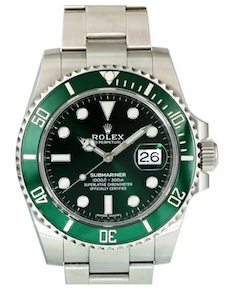
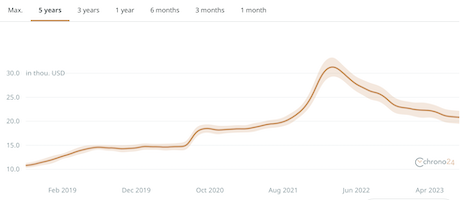
The most valuable, and interesting, Rolexes tend to be sports models. We’ll define what a “sports” model Rolex is in the next section.
